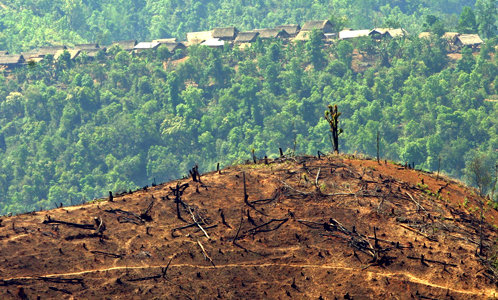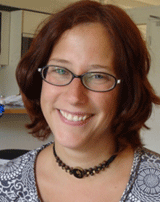 Foto: BARBARA WALTONThe expansion of agriculture is the single most important cause of deforestation in the tropics. Commercial agriculture in particular is expanding rapidly. In 2007, one-third of all agricultural land in Brazil was used for export agriculture, in particular soya beans that are used in animal feed.
Foto: BARBARA WALTONThe expansion of agriculture is the single most important cause of deforestation in the tropics. Commercial agriculture in particular is expanding rapidly. In 2007, one-third of all agricultural land in Brazil was used for export agriculture, in particular soya beans that are used in animal feed.
The forests function as carbon sinks–that is, they hold carbon dioxide. Conserving the forests is therefore valuable in fighting the increasing amounts of greenhouse gasses in the atmosphere. In the REDD system, developing countries are compensated financially if they can reduce their deforestation (REDD = Reducing Emissions from Deforestation and Forest Degradation). Indonesia is one country that has received compensation for limiting tree felling when the cultivation of palms for palm oil is expanding.
But in the worst case the result of REDD is that deforestation is moved to another country. In her thesis at Water and Environmental Studies in the Centre for Climate Science and Policy Research, Ms Henders examines how the existing methods work in order to define and calculate carbon dioxide emissions in connection with deforestation. She proposes a more just method.
“REDD only takes into account forest use in one country. Changes in land use on an international plane are not included. But the effect on the climate is the same regardless of what country the forests are cut down in. For the UN this means in the worst case that a lot of money is spent in vain, without decreasing the climate problem.”
“Carbon dioxide emissions are usually measured where they take place, i.e. in the production chain. But today, more and more people are agreed that consumption is driving increased deforestation and therefore increased greenhouse emissions. Perhaps a method that also includes the consumption chain would more truly reflect how and why emissions arise,” Ms Henders argues.
She gets her inspiration from the methods that exist for the measurement of a person’s ecological footprint. The method she proposes builds on mapping the physical trade flows of one agricultural product. Where does all the soya grown in Brazil, causing significant deforestation, actually go? How is it used?
 “By analysing the physical trade flows of agricultural products, we can see what effect consumption has on the clearing of forests and thereby the increased carbon dioxide emissions,” says Ms Henders.
“By analysing the physical trade flows of agricultural products, we can see what effect consumption has on the clearing of forests and thereby the increased carbon dioxide emissions,” says Ms Henders.
But this method can be politically sensitive, she points out. Until now, no politicians have dared to try to limit production–quite the opposite, in fact. So it can be politically inopportune to show the connection between emissions of greenhouse gasses and consumption.
Ms Henders has named the new method, which she developed together with Martin Persson of Chalmers, LUC-CFP: Land-Use Change – Carbon Foot Print. Now she will go further and test its usefulness in export production in two countries, Brazil and Indonesia.
Sabine Henders defended her thesis on 27 March. The thesis is called “To leak or not to leak. Land-Use Displacement and Carbon leakage from Forest Conservation”.